Wahiawā (“place of noise”) is located about twenty miles north from downtown Honolulu in central O'ahu between two mountain ranges. It’s a unique community surrounded by water on three sides by Lake Wilson (Kaukonahua or Wahiawā Reservior). It was once prime agricultural land for the Hawaiian Pineapple Company. The town was founded in 1898 to support the plantation communities and neighboring military bases (Schofield Barracks and Wheeler Army Airfield).

*This population distribution only includes the following areas of Wahiawā based on the Wahiawā Neighborhood Board map: Wahiawā Mauka, Wahiawā Waena, and Wahiawā Makai.
Methodology
The Wahiawā community became the focus of the HI-CFL project in 2013-2014. The process took several months to complete. After interest from the community was confirmed, an open public gathering (Kick-Off) was held to inform residents, stakeholders, and interested community members about the HI-CFL project. A workshop followed specifically for residents to provide instruction on utilizing Mapping Attributes: Participatory Photographic Surveys (MAPPS) to survey community features by photographing and geocoding place-based characteristics. Upon completion of MAPPS, the volunteer photographers reviewed all photos and determined which illustrated significant features of their neighborhood applying the WHO physical, social, and service environments. At the final event (Community Conversation), community members viewed the selected photos, discussed, and suggested ideas for how the Wahiawā community could become a Community For a Lifetime.
Between October and November 2014, a total of 21 individuals (44 cumulative participants) including Wahiawā residents, stakeholders, and interested community members became involved in the HI-CFL project. Ten volunteer MAPPers took 115 photographs and selected 31 to discuss at the Community Conversation. MAPPers also were able to view the selected photographs on a closed website so that they could add their individual comments prior to the Community Conversation. The primary meetings were conducted at the Leilehua High School Library and Wahiawā Public Library.
| Date |
Meeting |
Number of Attendees |
| October 1, 2014 |
Kick Off & MAPPS Training |
12
|
| October 3, 2014 |
Kick Off & MAPPS Training |
4 |
| October 22, 2014 |
MAPPS Discussion |
11 |
| November 12, 2014 |
Community Conversation |
17 |
Illustration of Wahiawā MAPPS Routes

Summary of Results
With the limited number of persons involved in the project, the information provided in this report may not reflect the views of the community as a whole. However, it offers an initial scan on the age-friendliness of the Wahiawā Community.
Is Wahiawā Age-Friendly?
“Yes” – 62%, “No” – 38% [Attendees at the HI-CFL Community Conversation]
I. Physical Environment
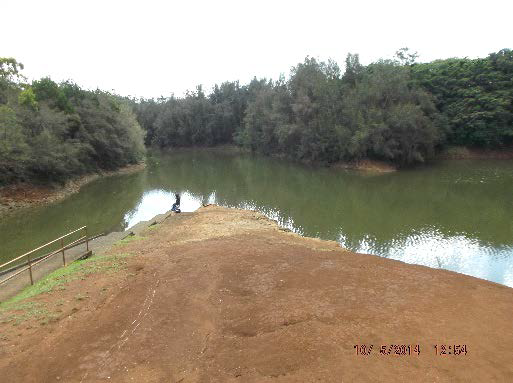 At the Community Conversation, 53% of the participants agreed with the statement, “Wahiawā has a physical environment that supports physical and mental health behaviors”. Being a rural community surrounded by water makes Wahiawā unique. Bridges (Wilson and Karsten Thot) are essential gateways to travel in and out of Wahiawā . These bridges as well as a pedestrian bridge that connects California and Glen Avenues seem to be sources of pride as well as necessities to live in this geographic area.
At the Community Conversation, 53% of the participants agreed with the statement, “Wahiawā has a physical environment that supports physical and mental health behaviors”. Being a rural community surrounded by water makes Wahiawā unique. Bridges (Wilson and Karsten Thot) are essential gateways to travel in and out of Wahiawā . These bridges as well as a pedestrian bridge that connects California and Glen Avenues seem to be sources of pride as well as necessities to live in this geographic area.
Several parks offer recreational activities for the use of residents, friends and families such as the Wahiawā State Freshwater Park, Wahiawā District Park, Kaala Park, Wahiawā (Welcomes You) Park, Whitmore Community Park, and Wahiawā Botanical Gardens. These provide many opportunities for both physical and mental health endeavors.
People try to use various streets in Wahiawā for physical exercise as well as ground transportation. Some frequent Royal Palm Drive for running and walking routes to observe beautiful views. People seem to like the size of the street and sidewalks in the “town area” of California Avenue and other “main roads”. However, there were concerns about the lack of sidewalks or conditions of existing sidewalks in many other locations (lower Kilani, upper California, near Iliahi School, etc.). These areas are difficult to walk, use strollers, or navigate in a wheelchair when the sidewalks are broken, uneven, too steep, have potholes, or have obstructions (utility poles, trees, and/or overgrown plants). In addition, the vehicle bridges need safe dedicated spaces for pedestrians and bikers.
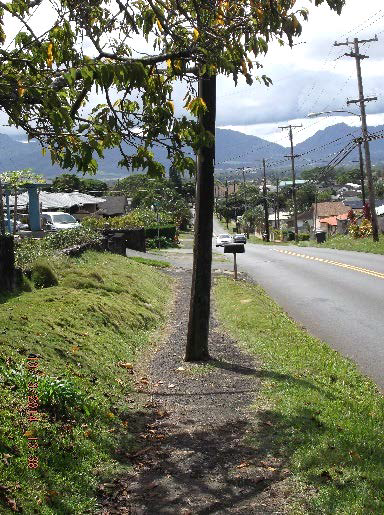 Wahiawa residents felt that there are many public facilities which lack regular maintenance such as parks, bridges, underpasses, and restrooms. They expressed frustration that stray cats, chickens, dogs, mosquitoes, drug addicts, and homeless seem to have become regular users. This prevents many people from safely enjoying Wahiawā’s attributes that support optimal health behaviors. To be able to enjoy the many physical assets, good pedestrian crossings, accessibility, and parking need to be improved. People would also like more trees to provide shade and benches to sit on.
Wahiawa residents felt that there are many public facilities which lack regular maintenance such as parks, bridges, underpasses, and restrooms. They expressed frustration that stray cats, chickens, dogs, mosquitoes, drug addicts, and homeless seem to have become regular users. This prevents many people from safely enjoying Wahiawā’s attributes that support optimal health behaviors. To be able to enjoy the many physical assets, good pedestrian crossings, accessibility, and parking need to be improved. People would also like more trees to provide shade and benches to sit on.
Traffic can come to a standstill when an accident occurs on one of the two main bridges to Wahiawā . This can create a very stressful situation as residents would find it difficult to get home. Creating additional transportation options was a discussion item and apparently has been an issue for a while. There was also a specific concern was regarding exiting the Shopping Center. Although there are traffic lights, it is extremely difficult and dangerous to make a left turn out of the complex, especially during rush hour when vehicles clog California Avenue.

Overwhelmingly, all participants (100%) agreed with the statement, “In Wahiawā, people of all ages have access to various forms of transportation”. People were very positive about the bus system available to Wahiawā . TheBus transit station is conveniently located in the heart of Wahiawā across the Shopping Center. They felt that it provides the community with a key role in Oahu transportation plans with a possible hub for future Rail spurs. Handi-Van service is available for those who qualify. Bike lanes have existed for about 20 years, although it appears that few bikers use it and as a result vehicle drivers do not always recognize the special designations.
The roadways and sidewalks in the commercial town area seem to be wide and fairly adequate. Where traffic lights and sidewalks exist on California Avenue, there is safer passage for pedestrians and vehicles alike. Note that this is not standard throughout the community.
 66% of the participants disagreed with the statement, “Outdoor spaces and building design in Wahiawā support mobility and independence”. The well-maintained pedestrian bridge that connects California and Glen Avenues is convenient, wheel-chair/stroller accessible, and located near TheBus lines. This makes it user friendly for residents of all ages, from children to elders.
66% of the participants disagreed with the statement, “Outdoor spaces and building design in Wahiawā support mobility and independence”. The well-maintained pedestrian bridge that connects California and Glen Avenues is convenient, wheel-chair/stroller accessible, and located near TheBus lines. This makes it user friendly for residents of all ages, from children to elders.
However, residents were concerned about safety issues regarding traffic and walkability. After school, many children walk on roadsides or jaywalk where sidewalks are in poor condition or non-existent. When Open Markets or special events occur, people park on the roadsides which affect views of on-coming traffic and push pedestrians to the street.
 Numerous parking shortages and structurally poor parking lot issues were sited. Insufficent parking occurs regularly at the Open Market, Satellite City Hall, Police Station, Library, small businesses on main streets, etc. Access to public facilities also seem to be limited (no handicap access, lack of restrooms, difficult entrance to park, e.g., near Wahiawā Welcomes You sign). Sometimes there are adequate accommodations in one aspect, but not another. For example, TheBus terminal has easy access, but no bathrooms; Wahiawā Botanical Gardens can accomodate wheelchairs and strollers, but the lower section has uneven ground and loose rocks.
Numerous parking shortages and structurally poor parking lot issues were sited. Insufficent parking occurs regularly at the Open Market, Satellite City Hall, Police Station, Library, small businesses on main streets, etc. Access to public facilities also seem to be limited (no handicap access, lack of restrooms, difficult entrance to park, e.g., near Wahiawā Welcomes You sign). Sometimes there are adequate accommodations in one aspect, but not another. For example, TheBus terminal has easy access, but no bathrooms; Wahiawā Botanical Gardens can accomodate wheelchairs and strollers, but the lower section has uneven ground and loose rocks.
People also noted that although the roadway to Kūkaniloko Birthstones is unpaved, it is now a major tourist attraction. Located in the middle of a field, it is hiking distance from a major highway on an unpaved dirt road with no parking lot or handicapped access.
 A majority of participants (78%) disagreed with the statement, “All Wahiawā residents have access to affordable, accessible housing options”. People stated that several low-income housing projects for seniors, handicapped, and families are dispersed throughout Wahiawā (Laiola, Silvercrest, across Fred Wright Park, etc.). The facilities appear to be within walking distance to most places, although people may walk a long distance to a bus stop. Qualifications for occupancy are based on specific criteria.
A majority of participants (78%) disagreed with the statement, “All Wahiawā residents have access to affordable, accessible housing options”. People stated that several low-income housing projects for seniors, handicapped, and families are dispersed throughout Wahiawā (Laiola, Silvercrest, across Fred Wright Park, etc.). The facilities appear to be within walking distance to most places, although people may walk a long distance to a bus stop. Qualifications for occupancy are based on specific criteria.
Although there are options for sheltered living in this community, some live without adequate accommodations. On Sundays, a group regularly feeds those lacking sufficient food resources. There appears to be a “colony” of homeless beneath Karsten Thot Bridge; others congregate along the banks of Lake Wilson, near Foodland, at Wahiawā District Park, at Wahiawā Freshwater Park, and various other locations. A concern was whether the homeless issue will compete with resources needed by the elderly.
II. Social & Cultural Environment

The majority of participants (82%) agreed with the statement, “Wahiawā supports active involvement, social and cultural participation, and intergenerational connectivity among all residents”. There are programs for people of all ages. There are recreational activities at the various parks, many sports events, computers and programs at Wahiawā Library, an Annual Pineapple Festival, Cherry blossom trees, and Botanical gardens. Wahiawā Hongwanji Mission hosts an annual bon dance which is a multi-cultural summer event involving all ages. For the elderly, there is a church with a special aging program and the district park has a Senior Club. Young people and their extended families often attend school functions. There are also many volunteer opportunities.
A cultural and spiritually important place for locals and visitors alike is the Kūkaniloko Birthstones located just outside the Wahiawā town. It is a significant historical site where ali'i gave birth, and is now on the National and Hawai'i Register of Historic Places under the jurisdiction of the State of Hawai'i Parks. It was suggested that it is an opportunity for the Office of Hawaiian Affairs, the Hawaiian Civic Club of Wahiawā , and others to promote and preserve it for future generations to come.
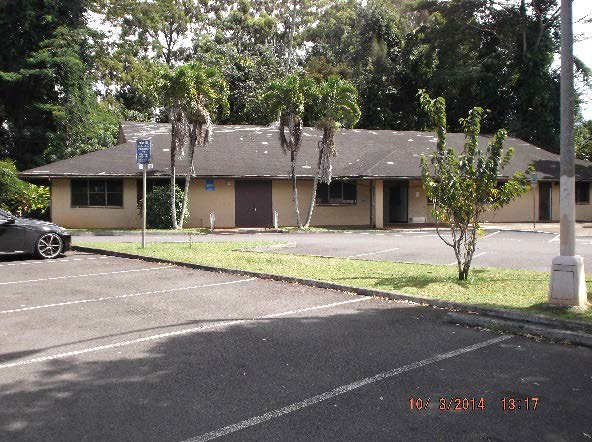 The majority of participants (91%) agreed with the statement, “People in Wahiawā have access to social networks and social participation”. People felt that Wahiawā is a great community to live and play for the young and the elderly. The numerous parks were mentioned as places to socialize, attend educational programs, participate in recreation, and obtain spiritual renewal. These included: Wahiawā State Freshwater Park (fishing, hiking, biking), Wahiawā District Park (swimming, tennis, baseball, Rainbow Senior Club, music, crafts, etc.), Kaala Park (playground, basketball and tennis courts, walking), Wahiawā (Welcomes You) Park, Whitmore Community Park, and Wahiawā Botanical Gardens (27 acres with exotic plants; social, educational, and spiritual activities).
The majority of participants (91%) agreed with the statement, “People in Wahiawā have access to social networks and social participation”. People felt that Wahiawā is a great community to live and play for the young and the elderly. The numerous parks were mentioned as places to socialize, attend educational programs, participate in recreation, and obtain spiritual renewal. These included: Wahiawā State Freshwater Park (fishing, hiking, biking), Wahiawā District Park (swimming, tennis, baseball, Rainbow Senior Club, music, crafts, etc.), Kaala Park (playground, basketball and tennis courts, walking), Wahiawā (Welcomes You) Park, Whitmore Community Park, and Wahiawā Botanical Gardens (27 acres with exotic plants; social, educational, and spiritual activities).

Other large gathering hubs mentioned were: Leilehua Golf Course (operated by the Army, but open to the public), Hugh Yoshida Stadium at Leilehua High School (largest outdoor facility/gathering place in town; a nice place for all generations to gather, relax and enjoy games), and Dole Plantation (educational programs for school children, garden tours, train rides, and garden maze).
54% of the participants disagreed with the statement, “Wahiawā residents have opportunities to contribute their skills,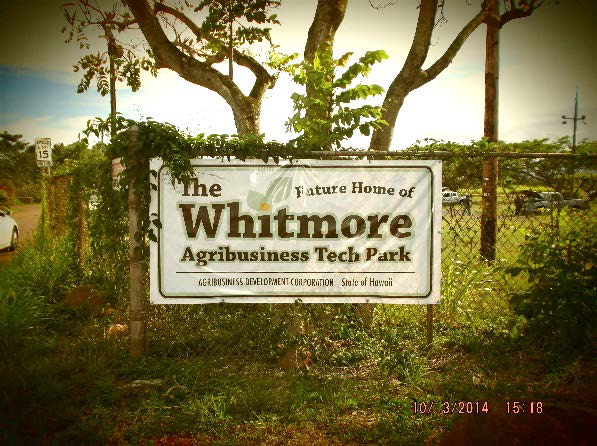 knowledge, and time to support the economic prosperity”. There are many private, non-profit, government, military, and volunteer jobs available for the community of Wahiawā . These include the Whitmore Agribusiness Tech Park, Wahiawā General Hospital, food establishments, retailers, service providers, schools, government (city, state, and federal), military, education centers, etc. The Lanakila Teaching & Learning Centers provides special training and employment opportunites for people with disabilities. There are also volunteer opportunities at numerous places such as the Wahiawā Botanical Gardens, 4-H, churches, schools, etc.
knowledge, and time to support the economic prosperity”. There are many private, non-profit, government, military, and volunteer jobs available for the community of Wahiawā . These include the Whitmore Agribusiness Tech Park, Wahiawā General Hospital, food establishments, retailers, service providers, schools, government (city, state, and federal), military, education centers, etc. The Lanakila Teaching & Learning Centers provides special training and employment opportunites for people with disabilities. There are also volunteer opportunities at numerous places such as the Wahiawā Botanical Gardens, 4-H, churches, schools, etc.
III. Service Environment

73% of the participants disagreed with the statement, “People in Wahiawā are well-informed and are able to obtain relevant information on programs and services in the community”. The Wahiawā Welcomes You sign immediately lets you know where you are as you cross the bridge. The newly landscaped area is attractive and greatly appreciated.
But, many people don’t really know what is available in town (pre-natal to elderly, residents, military or visitors). Signage of buildings are not visible or completely lacking. The information about services needs to be obvious and disseminated. Some services are not located on the main roads which make them more difficult to locate. Residents wondered if there should be an information board somewhere.
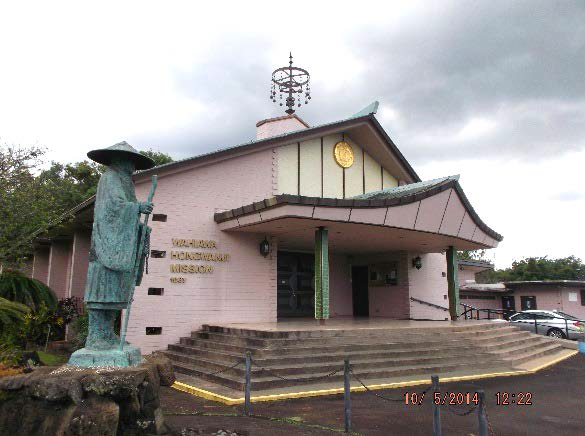 A majority (77%) of participants agreed with the statement, “In Wahiawā, community supports and services (including health services) are available and accessible to all residents”. Having these attributes locally available is extremely important for this rural community. The multitude of services in Wahiawā make it easier for people to fulfill their quality of life desires instead of driving to distance communities such as Pearlridge, Mililani, Ewa, or downtown Honolulu. Residents highlighted in their assessment and discussions the following: automobile services, spiritual options (over 40 churches of different denominations), education, agriculture assistance, social services, public health services, courthouse, water tower, water supply company, wastewater facilities, refuse department, recycling, post office, public library, satellite city hall, fire station with EMS paramedic unit, police station, transit (TheBus) services, etc.
A majority (77%) of participants agreed with the statement, “In Wahiawā, community supports and services (including health services) are available and accessible to all residents”. Having these attributes locally available is extremely important for this rural community. The multitude of services in Wahiawā make it easier for people to fulfill their quality of life desires instead of driving to distance communities such as Pearlridge, Mililani, Ewa, or downtown Honolulu. Residents highlighted in their assessment and discussions the following: automobile services, spiritual options (over 40 churches of different denominations), education, agriculture assistance, social services, public health services, courthouse, water tower, water supply company, wastewater facilities, refuse department, recycling, post office, public library, satellite city hall, fire station with EMS paramedic unit, police station, transit (TheBus) services, etc.
 People noted that an adult day care program at Wahiawā Methodist Church (Age to Perfection) is supported by trained medical and professional staff and has offered social activities, meals, and general supervision for many years. There are numerous preschools in the area that operate at churches, public schools, and private facilities. There are also community services for special needs population such as Foodbank at St. Stephen’s Episcopal Church, Lanakila Teaching & Learning Centers (training and employment opportunites for people with disabilities), food distribution at a park, etc. The large military population just outside of the town have conveniences on base that is primarily for the military families.
People noted that an adult day care program at Wahiawā Methodist Church (Age to Perfection) is supported by trained medical and professional staff and has offered social activities, meals, and general supervision for many years. There are numerous preschools in the area that operate at churches, public schools, and private facilities. There are also community services for special needs population such as Foodbank at St. Stephen’s Episcopal Church, Lanakila Teaching & Learning Centers (training and employment opportunites for people with disabilities), food distribution at a park, etc. The large military population just outside of the town have conveniences on base that is primarily for the military families.
Farms, grocery stores, and farmer’s markets provide food products. One of the farms (Peterson’s Upland has sold fresh eggs to people not only from Wahiawā , but the surrounding areas for over 100 years. Ready to eat foods or purchased meals are easily obtained from fast food chains and local small restaurants and bakeries.
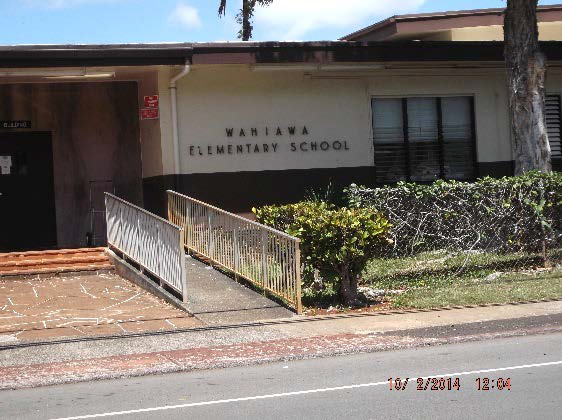 Wahiawā has many private and public schools located throughout the community. The State of Hawai’i Department of Education’s Leilehua complex includes seven elementary feeder schools, two middle schools, and one high school. It provides education programs from preschool to adult continuing education. Besides regular school-based activities, the facilities are used for craft fairs, fundraisers, and government elections.
Wahiawā has many private and public schools located throughout the community. The State of Hawai’i Department of Education’s Leilehua complex includes seven elementary feeder schools, two middle schools, and one high school. It provides education programs from preschool to adult continuing education. Besides regular school-based activities, the facilities are used for craft fairs, fundraisers, and government elections.
 Health services that are available in Wahiawā include a dialysis center, a laboratory, and pharmacies (3). Since 1944, Wahiawā General Hospital has been providing healthcare—critical emergency, acute, and long-term care. On the grounds, there is also the Wahiawā Nursing Rehabilitation Center (formerly a long-term care facility). People are grateful to have this precious asset to the community and outlying areas of the north shore so that residents need not travel all the way to Honolulu, Ewa, or Pearlridge.
Health services that are available in Wahiawā include a dialysis center, a laboratory, and pharmacies (3). Since 1944, Wahiawā General Hospital has been providing healthcare—critical emergency, acute, and long-term care. On the grounds, there is also the Wahiawā Nursing Rehabilitation Center (formerly a long-term care facility). People are grateful to have this precious asset to the community and outlying areas of the north shore so that residents need not travel all the way to Honolulu, Ewa, or Pearlridge.
However, there is great concern about health care especially for Medicare and Medicaid participants due to low reimbursements. Residents felt that if physicians and other medical professionals do not locate their services in this community it is very difficult to obtain good health care. It was suggested that a community health center, like Waikiki Health Center be established permanently.
What are the Priorities in Creating an Age-Friendly Wahiawā?
Physical Environment
- *Safety issues (walkways, crosswalks, streets, traffic, undesirables)
- Shuttle service for residents
Social & Cultural Environment
- *Senior health event (previously held at the hospital)
- More social events; not enough community events
- Publicity of existing and new events
Service Environment
- *Health Care Center to provide services for Medicare/Medicaid population
- Increase availability of medical care; difficult to get enough doctors to provide services
- Create access to community information (e.g., Community information board); better signage
*Considered Top Priority by the attendees of the Wahiawā Community Conversation.
Acknowledgements
A special thanks to the staff of the Wahiawā Cooperative Extension Service Office, Leilehua High School, and Wahiawā Library for their assistance with this project. We would also like to thank the following people for their contributions: MAPPers (Alésia Au, Brenda Chang, Valerie Frohardt, Hermane Kiili, Bob Lormand, Stuart Nakamoto, Representative Marcus Oshiro, Rose Saito, Maranata Temese Jr., and Edwina Wong); facilitators (Ed Young, Cathy Takase, and Ronald Matayoshi); and Deborah John of the Oregon State University Extension Service for sharing the engAGE in Communities project as well as providing training and technical assistance to develop HI-CFL.
References
Encyclopaedia Britannica. Encyclopaedia Britannica Online Academic Edition. Encyclopædia Britannica Inc. (2014), Wahiawa. Retrieved November 24, 2014 from http://www.britannica.com/EBchecked/topic/634067/Wahiawa
John, D.H. & Gunter, K. (2012). engAGE in Community, Northwest Public Health, 29, 10-11.
John, D.H., Gunter, K.B., Etuk, L., & Trost, K.K. (2012). GROW Healthy Kids and Communities HEAL MAPPS™ Toolkit Manual. Corvallis, OR: Oregon State University.
U.S. Census (2010). 2010 Census Demographic Profile: Oahu Census Tract. Retrieved December 1, 2014 from http://census.Hawai’i.gov/Census_2010/demographic/demo_profile_ct_Oahu/
Wikipedia, the free encyclopedia. Wahiawa, Hawaii. Retrieved from November 24, 2014, http://en.wikipedia.org/wiki/Wahiawa,_Hawaii
World Health Organization (2007) GlobalAge-Friendly Cities: A Guide
World Health Organization (2007) Checklist of Essential Features of Age-Friendly Cities
This report was generated by Pamela Chow and Seiko Sato, University of Hawai'i at Mānoa, College of Tropical Agriculture & Human Resources, Department of Family & Consumer Sciences, Cooperative Extension Service. It has been funded in part by grants from USDA Hatch and State of Hawai'i Department of Commerce & Consumer Affairs, Digital Literacy Project. Revised 01/30/15
Download this report 